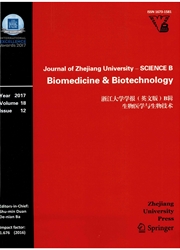

 中文摘要:
中文摘要:
研究目的:创新要点:通过分析miRNA的核心启动子和顺式作用元件为进一步解析大豆(Glycinemax)miRNAs表达调控及其功能研究提供重要信息。利用生物信息学方法全面解析了大豆降解组文库miRNA的启动子特征,并依据顺式作用元件及靶基因构建了miRNA的表达与生长素响应因子、赤霉素响应因子之问存在潜在的负反馈调控网络。研究方法:本研究利用TSSP程序和PlantCARE数据库预测了来自大豆降解组文库的440个miRNA的核心启动子以及369个miRNAs的顺式作用元件,并依据顺式作用元件及靶基因构建miRNA调控网络。重要结论:83.86%的miRNA在其上游序列中含有启动子,8.64%的miRNA在其下游序列中含有启动子,21.59%的miRNA包含增强子。核心启动子的TATA盒与转录起始位点(TSSs)的分布相似(见图2)。此外,对转录起始位点5’端的顺式作用元件预测为miRNAs的可能功能和表达的时空性提供了线索。miRNAs的顺式作用元件和靶基因的分析显示,部分miRNA的表达与生长素响应因子、赤霉素响应因子之间存在潜在的负反馈调控(见图3)。
 英文摘要:
英文摘要:
Objective: MicroRNAs (miRNAs) are genome-encoded, small non-coding RNAs that play important functions in development, biotic and abiotic stress responses, and other processes. Our aim was to explore the regu- lation of miRNA expression. Methods: We used bioinformatics methods to predict the core promoters of 440 miRNAs identified from a soybean (Glycine max) degradome library and to analyze c/s-acting elements for 369 miRNAs. Results: The prediction results showed that 83.86% of the 440 miRNAs contained promoters in their upstream se- quences, and 8.64% (38 loci) in their downstream sequences. The distributions of two core promoter elements, TATA-boxes and transcription start sites (TSSs), were similar. The cis-acUng elements were examined to provide clues to the function and regulation of spatiotemporal expression of the miRNAs. Analyses of miRNA cis-elements and targets indicated a potential auxin response factor (ARF)- and gibberellin response factor (GARF)-mediated negative feedback loop for miRNA expression. Conclusions: The features of miRNAs from a Glycine max degradome library obtained here provide insights into the transcription regulation and functions of miRNAs in soybean.
 同期刊论文项目
同期刊论文项目
 同项目期刊论文
同项目期刊论文
 期刊信息
期刊信息
